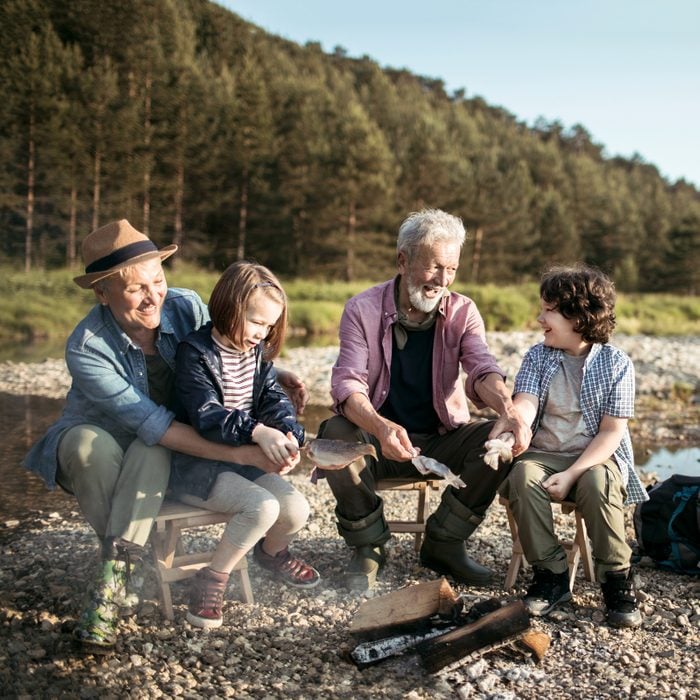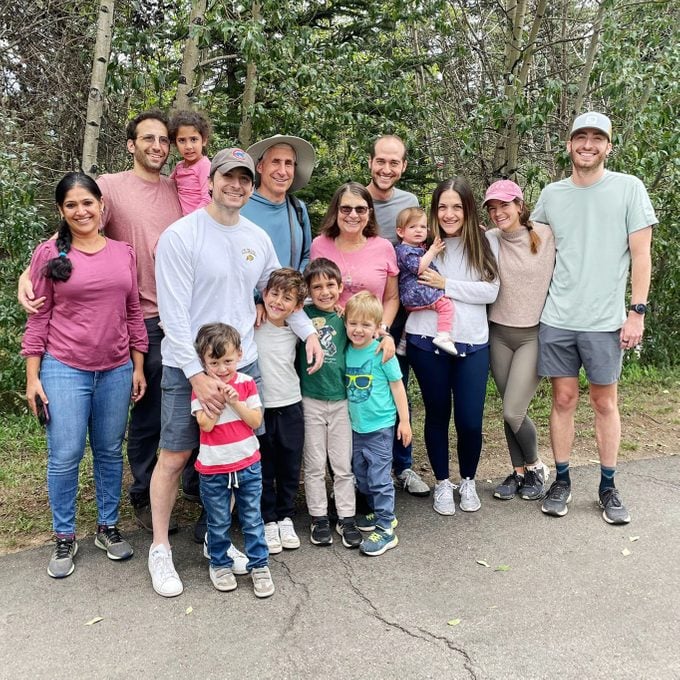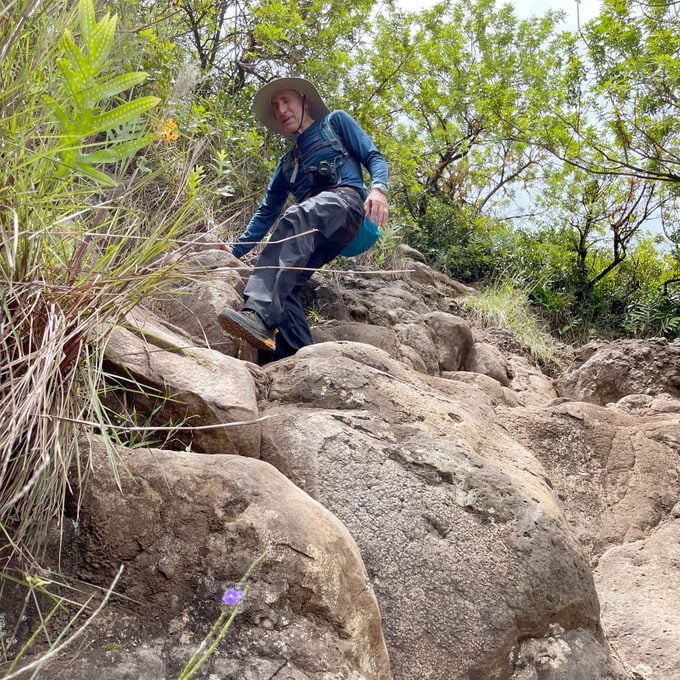Glioblastoma, the Brain Cancer Affecting 13,000 Americans Per Year: One Patient’s Intrepid Story of Hope
Updated: Dec. 07, 2022

When a loved one gets a terminal cancer diagnosis, it can make you feel like things are hopeless. For one couple, a seemingly impossible brain cancer diagnosis turned out to be just the beginning of embracing life.
Looking back on the months leading up to my husband’s diagnosis of glioblastoma—a terminal brain cancer—I can catalog the symptoms he shared and the timeline over which each manifested.
First, when Ira had begun to experience intermittent headaches radiating through his right eye, that caught my attention. He has a high tolerance for pain and has rarely ever complained. So in late June 2021, he made an appointment with a physician we weren’t familiar with at our PCP’s office. That doctor detected no abnormalities and said that a brain scan wasn’t called for. Instead, he suggested an eye doctor visit. The ophthalmologist was likewise unable to detect any cause for concern and made no other recommendations.
Meanwhile, the pain occasionally caused discomfort but did not seem to affect Ira’s ability to function. Ira also became frustrated with his inability to occasionally type words correctly: he felt that his fingers were one key off from their proper alignment.
But until we received the results of his July 2020 MRI, I never imagined that Ira had a deadly disease that causes most patients to pass away within 12 to 18 months of diagnosis.
Get The Healthy @Reader’s Digest newsletter
Getting diagnosed with glioblastoma
I started to notice minor spatial issues when Ira was driving the car. Then in late July, a month after that first doctor’s appointment during a six-hour road trip to Telluride for our youngest son’s wedding, Ira insisted on making the round-trip drive without my assistance.
On our return drive home, I kept jolting to alertness every time the tires crossed the lines. “Someone must have moved the rumble strips since we last drove on this highway,” he joked. I observed with caution. The next day, Ira became disoriented walking in our neighborhood and suddenly appeared much quieter than his usual, lighthearted manner.
When his primary care physician examined him, he pointed out Ira’s asymmetrical smile. Several hours later, a five-centimeter tumor, with the characteristics of glioblastoma, was detected in Ira’s right temporal lobe.
As the doctor spoke three words—terminal brain cancer—I was overwhelmed with fear. The National Brain Tumor Society points out that around 13,000 Americans are diagnosed with glioblastoma each year. It’s what affected such figures as Beau Biden and U.S. Senator John McCain.
Ira managed to stay calm and positive.
9 Signs of Disease That Are Written All Over Your Face
Staying positive despite your prognosis
After consulting with Dr. Kevin Lillehei, a neurosurgeon at the University of Colorado Cancer Center near Denver, Ira decided to undergo the standard of care treatments in Colorado rather than to travel elsewhere. Dr. Lillehei successfully removed 100% of the visible tumor. During our introductory neuro-oncology visit with Dr. Douglas Ney, we received information about the US Food and Drug Administration (FDA)-approved Optune device, which uses tumor treating fields to disrupt cancer cell division.
Glioblastomas are known to have microscopic finger-like tentacles that remain in the brain after a resection. These cells aggressively regroup and are likely to form one or more new tumors. To forestall the inevitable, Ira agreed to six weeks of oral chemotherapy (Temodar) coupled with daily radiation treatments. After a short break, Ira started a six-month regimen of Temodar and simultaneously started wearing the Optune device manufactured by Novocure. Ira is still using this device.
8 New Breast Cancer Treatments Some Oncologists Are Calling ‘Mind-Blowing’
Immediately after the diagnosis, I started researching how others had defeated deadly diseases, as well as how to improve brain function and longevity. It was not good enough to simply survive a few extra months. Ira and I wanted to remain active for as long as possible so we could spend time with our children and grandchildren, and to explore the world.

38 Fun Ways to Have a Healthier and More Active Family
By having a forward-looking mindset, I believe we minimized the natural tendency to dwell on the dire statistics that are often associated with glioblastoma. Ira was intent on skiing after he completed the first round of radiation and chemo. While undergoing the six months of chemotherapy, we celebrated the New Year by skiing. I also started booking travel reservations and made sure that we purchased adequate insurance for each trip.
12 Loving, Little Ways to Support a Loved One Through Chemo
Looking forward, no matter what

Our goal was to implement lifestyle changes that would strengthen Ira’s body as it was being barraged by brain surgery, chemotherapy and radiation. I removed almost all the processed foods from our diet, and we adopted a pescatarian diet filled with plant-based, organic foods. Going forward, I made most of our meals from scratch and watched our sugar intake. The learning curve was steep as I experimented with previously unknown ingredients and unusual combinations of foods.
I Had Oatmeal Every Day for a Week—Here’s What Happened
Ira refused to remain sedentary. Within less than a day after his craniotomy, he was walking around the hospital in 10-minute increments. Since the surgery, Ira and I have made daily walks one of our priorities. Sometimes these treks are for a couple of miles in our neighborhood, while other times they are half-day or full-day hikes in a variety of ecosystems and altitudes. Ira also sets aside time for a resistance training routine several times a week.
One Major Effect Walking Has on Your Dementia Risk, Says Research
Unlike many couples who grow apart when their stress levels peak, our love for one another became more intense. Laughter and humor brightened each day, along with impromptu dancing in our kitchen and bedroom. Our cat, Chloe, instinctively knew something was amiss and has clung to us since Ira came home from the hospital.
We also found it therapeutic to practice our Jewish faith. I fulfilled Ira’s wish to make another trip to Israel as soon as COVID restrictions permitted.
At 28 months post-diagnosis, Ira continues to lead an active lifestyle by skiing in the winter, snorkeling when we are traveling near an ocean, and actively participating in classes at wellness resorts and dude ranches, including aerial yoga, jumping on personal trampolines and horseback riding. Ira and I realize that we are living on bonus time and remain grateful for each day that we can embrace life together.
For more wellness updates, follow The Healthy on Facebook, Instagram, and Twitter. Keep reading:
- The 3 Words You Need for Any Holiday Family Conflict, from a Holocaust Survivor and Psychologist
- The Ultimate 2022 Guide to a Healthy Holiday Season
- Broadway Legend Sutton Foster’s Favorite Way to Decompress
- This Is the Actual Reason RSV Is Everywhere Right Now, Says a Johns Hopkins Pediatric ICU Doctor